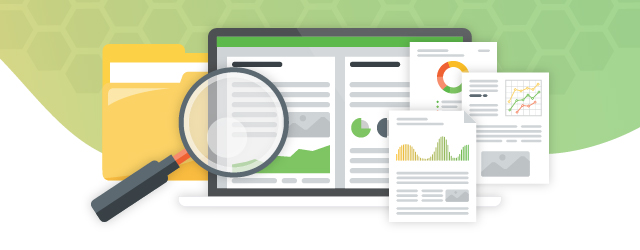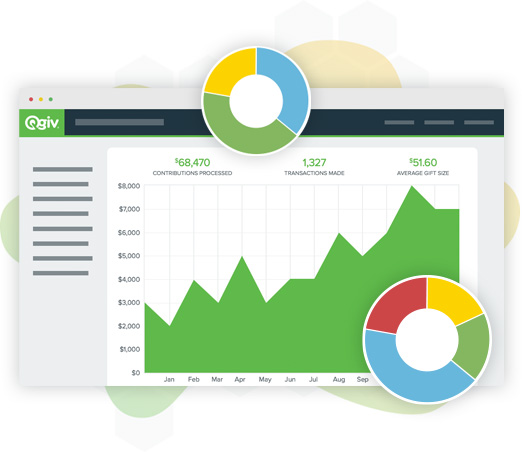“Well, have we tried asking someone like Oprah for a donation? Or Bill Gates? They have lots of money!”
A recurring joke in many nonprofits is that, when the topic of major gifts fundraising arises, board members will suggest asking celebrities and major philanthropists for gifts. Nonprofit staff knows that asking famous mega-rich philanthropists isn’t a tenable fundraising option. But the board members’ naïve (if well-intentioned) question does bring up another common question:
Where does one find major donors?
Here’s a hint: you probably already have them in your database.

Major donors don’t tend to approach a brand new organization with a huge gift. Instead, they tend to slowly build relationships with nonprofits over time before making a big donation. That means you’ll need to use your giving platform (and probably your CRM) to identify potential major gift donors.
Here’s how!
Look for loyal donors
Do you have a donor who has consistently supported your organization with moderately-sized gifts? They may be a potential major gift donor!
If you want to determine someone’s potential to make a major gift, look at the amount they give and with what frequency. Someone who makes a monthly gift of $20 might not be the best major gifts prospect, but someone who gives, say, $150/month would be a much better choice.
You can also look for donors who give a moderately-sized gift on a regular basis. Do you have a donor who gives $1,000 every December? They’re a great candidate for more research! Spend a little extra time cultivating that relationship—they may be a major gifts prospect you wouldn’t have anticipated.
Find mid-level donors
Fundraisers are busy. You’re working on recruiting donors, retaining donors, and building relationships with major donors. In that flurry of activity, there’s a real chance you’re overlooking a group of people Rachel Muir refers to as “the most neglected, misunderstood, and lucrative donors”—your mid-level donors.
Mid-level donors fall somewhere between “major gifts donors” and “standard donors.” They’re not the $20-$100 one-time donors who are included in your standard donor retention practices, but they’re not the $10,000 or more major gifts donors on whom you spend extra time and attention. They’re somewhere in the middle.
The dollar amount of mid-level gifts will vary from nonprofit to nonprofit. If the majority of your donors give between, say $20 and $200 at a time and your major donors tend to give $10,000 at a time, your “mid-level” donors may give between $500-$2,000 at a time. If your donors’ average gifts skew higher, your mid-level donors may be giving $5,000. It’s relative. What isn’t relative is that people who give somewhere between “standard” amounts and “major” gifts are great candidates for major gifts outreach.
Feed data into your CRM and prospect screening platforms
Identifying potential major gifts donors is an important part of building a great major gifts pipeline. If you’re a small nonprofit with a small and highly engaged donor base, you may already know who’s a great potential major gift donor. But, for other fundraisers, identifying potential major gifts donors is a little harder.
That’s where having a great CRM and prospect screening tools comes in handy. They’ll help you organize, track, and use your data to find potential major gifts donors that are already in your system! Your online fundraising platform should give you lots of usable data that will help you identify great prospects; your CRM and prospect screening tools should help you interpret that data, identify the right people, and start building relationships with them.
This combination of tools will help you identify great prospects and track your communications with them. It will also help you pinpoint their giving potential, show you patterns you can use to guide your conversations with them, and ultimately help you put together an ask that will inspire and motivate your prospect.

Conclusion
Major gifts fundraising is a science and an art. Feeling out a donor’s interests, giving capacity, giving history, and potential for a major gift is a delicate and deliberate process. But your online fundraising platform should help you! Use your fundraising platform’s data in combination with your CRM and prospect screening platforms. They’ll help you identify donors with a history of engagement, patterns of making moderately-sized gifts, and giving capacity. You’ll end up with a list of highly engaged donors who are ready for cultivation and, ultimately, a personalized appeal.
Want to learn more?
Does your online fundraising platform help you identify potential major gift donors? Does it work with a CRM that will help you manage and track data that will turn up great prospects? It should! Qgiv’s recurring donation system, reporting tools, and CRM integrations are all capable of doing all this and more. Learn more about our platform or contact us for a personalized demonstration of how our tools can work for you!


